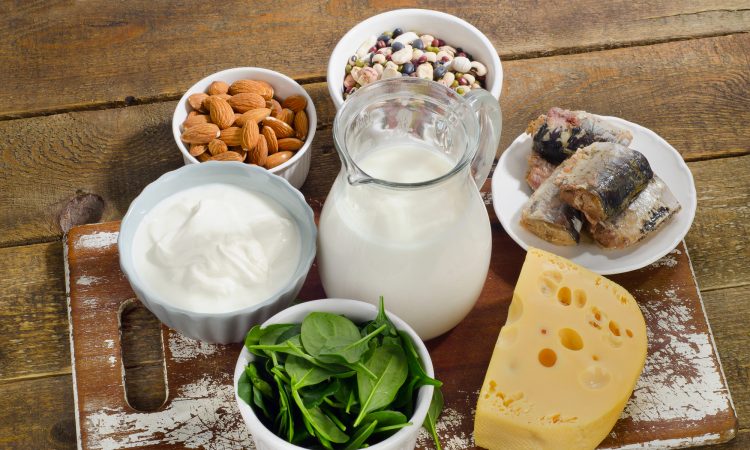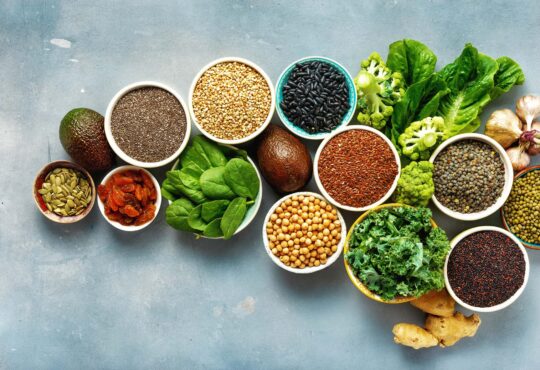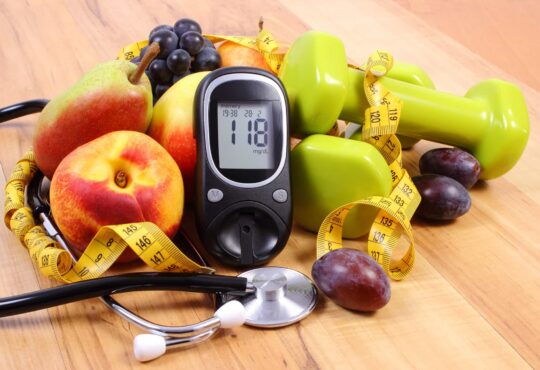
Bones are dynamic, living tissue just like your muscles, only harder.
Most of us think of them as solid and unchanging, like rock, but that’s far from the truth. Your body is constantly pulling minerals from your bones and sending more minerals into your bones. They’re like a highway that’s always under repair while it’s being rebuilt.
Right now, 10% of your bones are being broken down and rebuilt.
We need calcium, but it’s just part of the bone health story – and fixating on it is a huge, although common, mistake.
The Bone Health Crisis
When bone density is too low, they are weak and fragile – a condition called osteoporosis.
People can, therefore, more easily break bones when they fall. What’s even scarier, hip bones can become so weak they snap while somebody is just walking, even without a fall.
Hip fractures are a major reason elderly people lose the ability to live independently. 20% of women who suffer a hip fracture die within a year.
About 10 million Americans have osteoporosis. Around the world, it’s 1 out of 10 men and 1 in 3 women over the age of 55.
Key Bone Health Nutrients
Yes, calcium is important, but so is magnesium, Vitamin D, potassium, Vitamin C, Vitamin K1, Vitamin K2, and other minerals bones need, including boron and strontium.
Ideally, they should all be in balance.
The Critical Cause of Osteoporosis
As long as the process of your bones continually getting torn down and built up remains in balance, you’re fine.
However, in osteoporosis, there’s an imbalance between bone resorption and bone formation. This leads to bones with lower density, so they’re weaker.
There are two types of bone cells. The osteoblasts make bone. The osteoclasts tear it down, using free radicals to “chip away” your bones.
Therefore, consuming plenty of antioxidants to reduce free radicals, helps keep the work of the osteoclasts in balance with the osteoblasts.
An imbalance is most prevalent in women, caused by hormones following menopause, but men are also at risk.
Studies suggest we need much less calcium than previously claimed by medical authorities. When we consume more than we need, our bodies simply excrete the excess. Therefore, assuming you eat a greater than the starvation-level amount of food, you are consuming enough calcium.
What About Milk?
Milk contains a lot of calcium, but studies have not shown an association between drinking it and reduced rate of fractures. You also obtain plenty of calcium from dark-green leafy vegetables, seeds, beans and lentils, almonds and figs.
Besides, almost all nonwhite people in the world are lactose intolerant, meaning they can’t digest milk.
What About Calcium Supplements?
The recommended daily intake of calcium is around 1,000-1,200 mg, but the only countries where people actually consume that much are all in Northern Europe.
However, older women and men in the poorer countries, where calcium consumption is low, suffer fewer fractures on average than do older women and men in wealthier countries.
Studies have found no correlation between calcium supplementation and reduced rates of osteoporosis. That’s a shocker, right?
What’s even worse: One study found supplementing with calcium actually increased the risk of suffering a hip fracture, by 64%. It can also lead to additional risk of heart attack, stroke and gastrointestinal distress.
And all of the above is assuming the calcium supplement does not contain lead, which many do.
Taking Biphosponate Osteoporosis Drugs
Including Fosamax, these are the most commonly prescribed medications for osteoporosis. They do reduce the amount of mineral the osteoclasts remove from your bones, so they do reduce the risk of fracture.
However, like all pharmaceutical medications, these drugs come with side effects. These include gastrointestinal distress, musculoskeletal pain, eye pain and atrial fibrillation (an irregular heartbeat). Esophageal cancer and eating away from your jaw are also risks, but rare.
All in all, if you don’t already have osteoporosis, you want to prevent it so you never have to take a drug for it.
How Can You Know If You Have Osteoporosis?
There’s no simple test. Doctors can see it on an x-ray. But they use a DXA scan to actually diagnose it.
How to Maintain Strong Bone Mineral Density
Eat more fruits and vegetables – women with osteoporosis have lower amounts of antioxidants.
According to one study, both older and younger women who doubled the amount of fruit they ate had a 5% increase in bone mineral content.
A study of Chinese women in Singapore found that a diet rich in vegetables, fruits, legumes, and soy reduces the risk of hip fracture.
Eat a handful of almonds every day – a test found almonds also reduce the formation of the osteoclast cells that chip away at your bones.
Eat plenty of whole grains, nuts, and beans – the phytates in these foods help block the osteoclast cells, thereby reducing how much mineral they chip away from your bones.
Get more sunlight and take Vitamin D during winter when you stay inside – Vitamin D complements your consumption of calcium. We know it’s essential for healthy bones.
Stop smoking – Smoking tobacco causes many health problems, and osteoporosis is one of them.
Stop drinking more than 1-2 ounces a day of alcohol.
Remain physically active – When you use your bones to stand, lift and move, you’re encouraging greater growth of bone tissue. Walking and running are great, and you should also include resistance training. That is, working your muscles with bodyweight exercises or even weight lifting that’s suitable for you. (Swimming and cycling are great ways to exercise in many ways, but they cushion your body from gravity, so they are not enough.)
Improve your balance – Falling can break your bones even if you don’t have osteoporosis. Regular exercise helps. So do yoga and Pilates. Or just practice balancing on one foot (when you have a wall or something else to hold yourself up.)
C L Shen, V von Bergen, M C Chyu, M R Jenkins, H Mo, C H Chen, I S Kwun. Fruits and dietary phytochemicals in bone protection. Nutr Res. 2012 Dec;32(12):897-910.
Z Dai, L M Butler, R M van Dam, L W Ang, J M Yuan, W P Koh. Adherence to a vegetable-fruit-soy dietary pattern or the Alternative Healthy Eating Index is associated with lower hip fracture risk among Singapore Chinese. J Nutr. 2014 Apr;144(4):511-8.
A N Sontakke, R S Tare. A duality in the roles of reactive oxygen species with respect to bone metabolism. Clin Chim Acta. 2002 Apr;318(1-2):145-8.
C Cervellati, G Bonaccorsi, E Cremonini, A Romani, E Fila, M C Castaldini, S Ferrazzini, M Giganti, L Massari. Oxidative stress and bone resorption interplay as a possible trigger for postmenopausal osteoporosis. Biomed Res Int. 2014;2014:569563.
S A New, S P Robins, M K Campbell, J C Martin, M J Garton, C Bolton-Smith, D A Grubb, S J Lee, D M Reid. Dietary influences on bone mass and bone metabolism: further evidence of a positive link between fruit and vegetable consumption and bone health? Am J Clin Nutr. 2000 Jan;71(1):142-51.
S A Lanham-New. Fruit and vegetables: the unexpected natural answer to the question of osteoporosis prevention? Am J Clin Nutr. 2006 Jun;83(6):1254-5.
C J Prynne, G D Mishra, M A O’Connell, G Muniz, M A Laskey, L Yan, A Prentice, F Ginty. Fruit and vegetable intakes and bone mineral status: a cross sectional study in 5 age and sex cohorts. Am J Clin Nutr. 2006 Jun;83(6):1420-8.
D Maggio, M Barabani, M Pierandrei, M C Polidori, M Catani, P Mecocci, U Senin, R Pacifici, A Cherubini. Marked decrease in plasma antioxidants in aged osteoporotic women: results of a cross-sectional study. J Clin Endocrinol Metab. 2003 Apr;88(4):1523-7.
O Altindag, O Erel, N Soran, H Celik, S Selek. Total oxidative/anti-oxidative status and relation to bone mineral density in osteoporosis. Rheumatol Int. 2008 Feb;28(4):317-21.
I D Platt, A R Josse, C W Kendall, D J Jenkins, A El-Sohemy. Postprandial effects of almond consumption on human osteoclast precursors–an ex vivo study. Metabolism. 2011 Jul;60(7):923-9.
Venn, F. Thies, C. O’Neil. Whole grains, legumes, and health. J Nutr Metab 2012:903767.
A. L�pez-Gonz�lez, F. Grases, N. Monroy, B. Mar�, M. T. Vicente-Herrero, F. Tur, J. Perell�. Protective effect of myo-inositol hexaphosphate (phytate) on bone mass loss in postmenopausal women. Eur J Nutr 2013 52(2):717 – 726.
A. L�pez-Gonz�lez, F. Grases, P. Roca, B. Mari, M. T. Vicente-Herrero, A. Costa-Bauz�. Phytate (myo-inositol hexaphosphate) and risk factors for osteoporosis. J Med Food. 2008 11(4):747 – 752.
https://www.ncbi.nlm.nih.gov/pmc/articles/PMC5684325/
https://www.ncbi.nlm.nih.gov/pmc/articles/PMC6276611/
https://www.bmj.com/content/351/bmj.h4580
I R Reid. Cardiovascular effects of calcium supplements. Nutrients. 2013 Jul 5;5(7):2522-9.
M J Bolland, A Grey, I R Reid. Calcium supplements and cardiovascular risk. J Bone Miner Res. 2011 Apr;26(4):899; author reply 900-1.
S Chalupka. Associations of dietary calcium intake and calcium supplementation with myocardial infarction, stroke, and overall cardiovascular mortality. Workplace Health Saf. 2012 Aug;60(8):372.
I R Reid, M J Bolland. Calcium supplements: bad for the heart? Heart. 2012 Jun;98(12):895-6.
I R Reid, S M Bristow, M J Bolland. Calcium supplements: benefits and risks. J Intern Med. 2015 Oct;278(4):354-68.
M J Bolland, A Grey, I R Reid. Calcium supplements and cardiovascular risk: 5 years on. Ther Adv Drug Saf. 2013 Oct;4(5):199-210.
H A Bischoff-Ferrari, B Dawson-Hughes, J A Baron, P Burckhardt, R Li, D Spiegelman, B Specker, J E Orav, J B Wong, H B Staehelin, E O’Reilly, D P Kiel, W C Willett. Calcium intake and hip fracture risk in men and women: a meta-analysis of prospective cohort studies and randomized controlled trials. Am J Clin Nutr. 2007 Dec;86(6):1780-90.
C D Hunt, L K Johnson. Calcium requirements: new estimations for men and women by cross-sectional statistical analyses of calcium balance data from metabolic studies. Am J Clin Nutr. 2007 Oct;86(4):1054-63.
Roberts HJ. Potential toxicity due to dolomite and bonemeal. South Med J. 1983;76(5):556-9.
Heaney RP. Lead in calcium supplements: cause for alarm or celebration?. JAMA. 2000;284(11):1432-3.
Rehman S, Adnan M, Khalid N, Shaheen L. Calcium supplements: an additional source of lead contamination. Biol Trace Elem Res. 2011;143(1):178-87.
Gulson BL, Mizon KJ, Palmer JM, Korsch MJ, Taylor AJ. Contribution of lead from calcium supplements to blood lead. Environ Health Perspect. 2001;109(3):283-8.
Ettinger AS, Hu H, Hernandez-avila M. Dietary calcium supplementation to lower blood lead levels in pregnancy and lactation. J Nutr Biochem. 2007;18(3):172-8.
Crosby WH. Lead-contaminated health food. Association with lead poisoning and leukemia. JAMA. 1977;237(24):2627-9.
Zerwekh JE, Pak CY. Lack of skeletal lead accumulation during calcium citrate supplementation. Clin Chem. 1998;44(2):353-4.
Bourgoin BP, Evans DR, Cornett JR, Lingard SM, Quattrone AJ. Lead content in 70 brands of dietary calcium supplements. Am J Public Health. 1993;83(8):1155-60.
Scelfo GM, Flegal AR. Lead in calcium supplements. Environ Health Perspect. 2000;108(4):309-13.
Ross EA, Szabo NJ, Tebbett IR. Lead content of calcium supplements. JAMA. 2000;284(11):1425-9.
Vaisrub S. Elsewhere in this issue. JAMA. 1977;237(24):2636.
Crosby WH. Lead-contaminated health food: the tip of an iceberg. JAMA. 1977;238(14):1544.
Bourgoin BP, Boomer D, Powell MJ, Willie S, Edgar D, Evans D. Instrumental comparison for the determination of cadmium and lead in calcium supplements and other calcium-rich matrices. Analyst. 1992;117(1):19-22.







